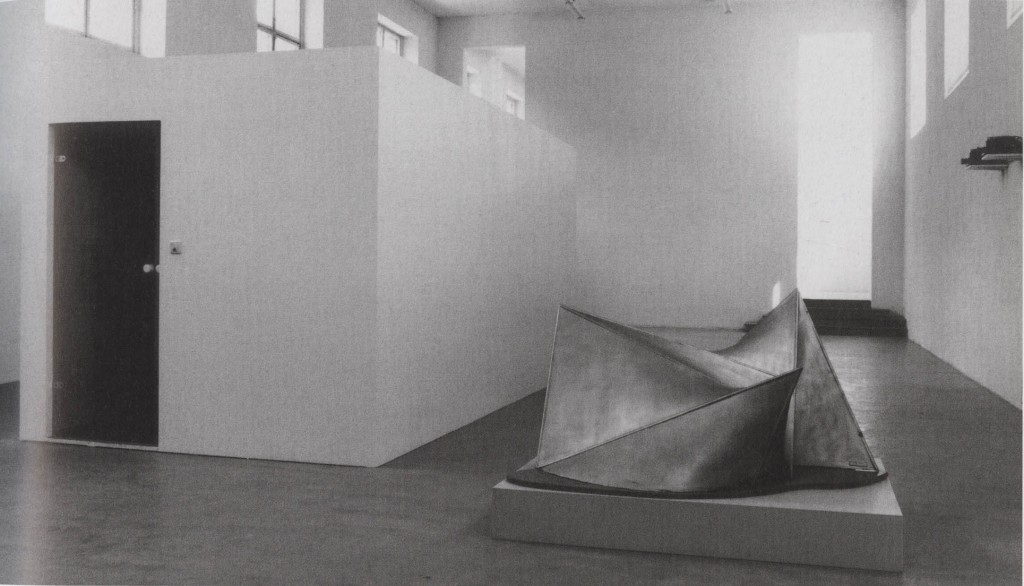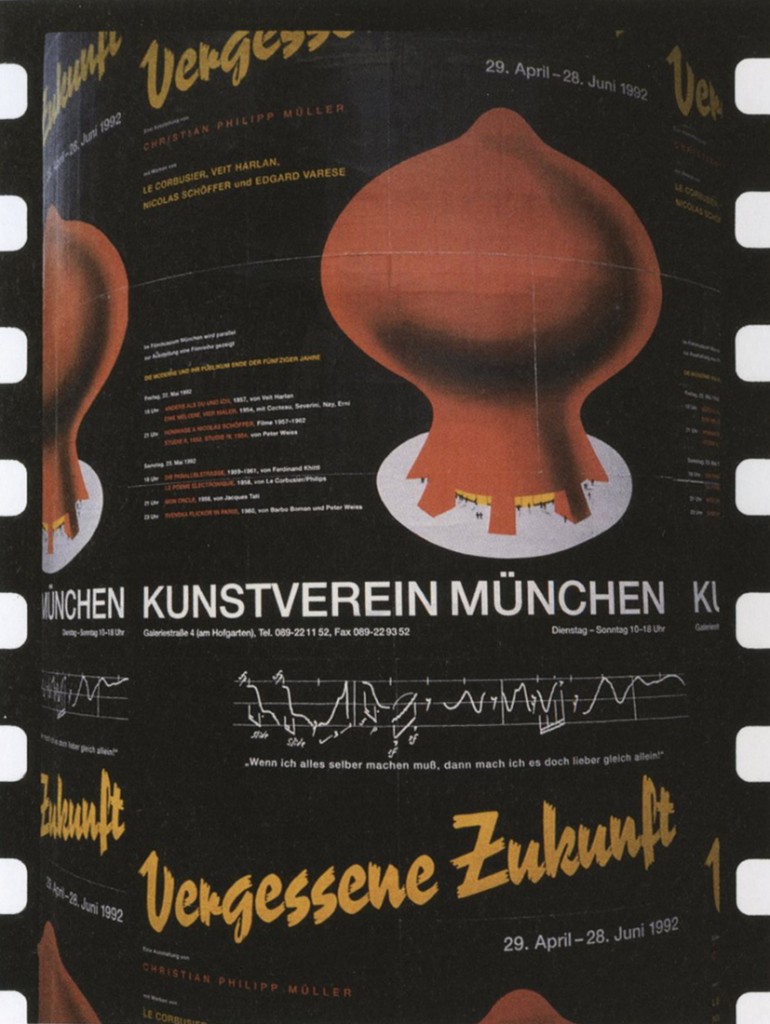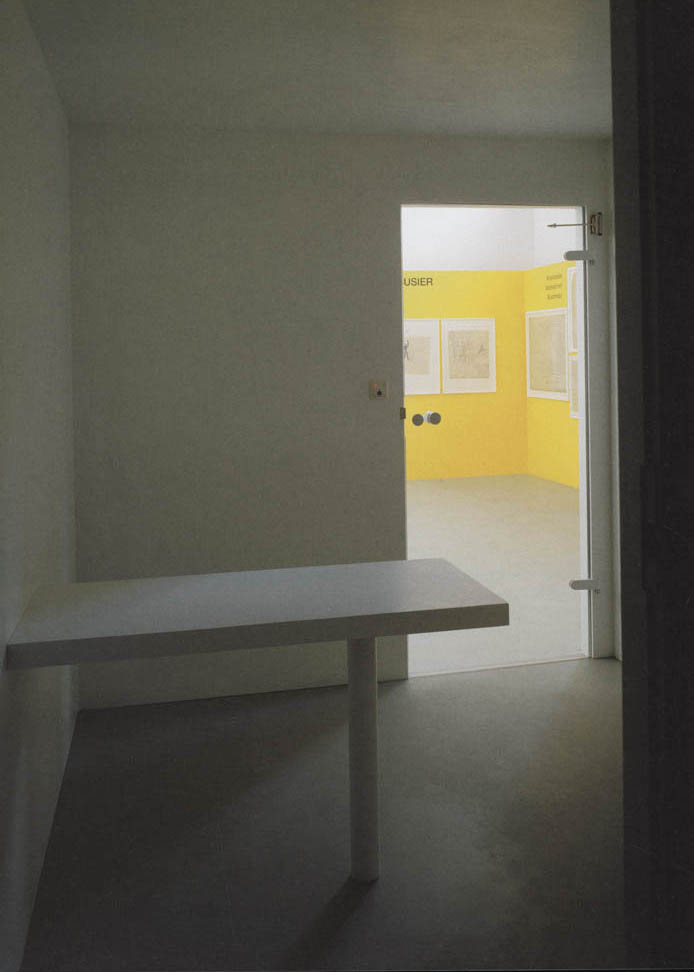Artist:
Christian Philipp Müller (born 1957 in Biel, Switzerland; lives and works in Berlin, Germany).
Materials:
Preliminary Room:
– Untitled, 1990, two enamel plaques (Antwerp / Villes radieuses); 41 x 27 inches / 85 x 39 inches; courtesy of Galerie Micheline Szwajcer, Antwerp
– Wall text
– Display case with documents about Poème éléctronique by Edgard Varèse
– Cinema display case with documents about Anders als du und ich (1957) by Veit Harlan
Central Exhibition Space:
– Das unvollständige Gedicht, 1992, wood, painted; carpet, two glass doors with electronic closing mechanisms, motion detector, CD player with two loudspeakers (composition of Poème éléctronique by Edgard Varèse, 8 min.); 178 x 204 inches; collection of Günther Lorenz, Munich
– Nomenklatur, 1992, two projectors with 123 small-format slides; courtesy of Galerie Christian Nagel, Cologne / Berlin
– Model of the Philips Pavilion at the World’s Fair in Brussels (1958) on a base
– Yellow wall element: ten original drawings, a photograph of Le Corbusier and for fragments of the score of Poème éléctronique
– Pink wall component: eight works on paper, a photograph, two illuminated kinetic objects and an architectural model by Nicolas Schöffer
Side Room 1:
– und in München, 1992, wall text; courtesy of Galerie Christian Nagel, Cologne / Berlin
Side Room 2:
– Das Dritte Geschlecht (with Madeleine von Bernsdorff), 1992, video, 9 min.; courtesy of Galerie Christian Nagel, Cologne / Berlin
– Narrow passageway
Description:
A research-based installation tracing the connections between several late modern utopias from the 1950s: the Philips Pavilion for the 1958 World Expo in Brussels (Corbusier with Xenakis and Varèse), Nicolas Schöffer’s book The Cybernetic City (1969), and Veit Harlan’s film Different from you and me (1957). The installation comprises a model of the pavilion, a reconstruction of Corbusier’s studio in Paris, a black box in which Varese’s eight-minute composition plays, a display of his scores alongside Le Corbusier’s original Modular drawings, an information panel about Schöffer’s vision for a cybernetic city, a vitrine with more original documents from Le Corbusier’s archives, and a cinematic showcase of Harlan’s Different from You and Me.
“As the title suggests, the [installation] examined utopias that had been repressed from contemporary consciousness… Drawing on historic materials, the show documented [its utopic projects], which would at first glance seem unrelated, in montages of texts and imagery on walls painted in various colors that recalled [the] exhibition displays of Group Material. It was not by accident that the deliberately aestheticized form of presentation brought the interpenetration of art, architecture, and design in the historic avant-gardes to mind, a practice late modernism, here—represented by Le Corbusier—had revived in the form of the high-tech spectacle. Yet far removed from the auratic aesthetic of the White Cube usually associated with high and late modernism, Müller’s wall design pointed to a historic event in whose light the clean break that ostensibly separates the era of high-modernist formalism from that of the neo-avant-gardist media revolution appears less absolute.”
—Sabeth Buchmann, “The (Re)Animation of Medium Specificity in Contemporary Art,” trans. Gerrit Jackson, in Contemporary Art: 1989 to the Present, eds. Alexander Dumbadze and Suzanne Hudson (Malden, MA and Oxford: Wiley-Blackwell, 2013), n.p.






